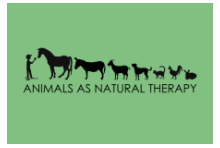PROJECT SUMMARY
Safety Net is an animal-assisted experiential learning program that was created in response to the need for alternative interventions for at-risk youth and focuses on developing essential life skills and promoting a positive path to graduation. In addition to one-on-one mentorship and group sessions, ANT partners with schools to provide leadership/ bully awareness, and self-confidence building groups and workshops. Our unique and proven program utilizes animals as the therapeutic modality to help a person build respect for self and others, develop trust and find self-confidence. Youth identify their individual challenges and obstacles, set clear and attainable goals, and review their progress towards meeting these goals. Then they identify how they can use this same model to be successful at school and home.
We have developed a variety of Safety Net programs to serve students with different needs and logistical restraints. The programs range from two-day workshops, weekly sessions for school groups, and week-long summer day camps. One-on-one sessions or after-school group sessions are offered based on the severity of the student’s challenges. Due to the tailor-made approach to address diverse issues, the project cost per student varies between $200 for the leadership/bully awareness series, $300 for day camp, and $750 for ten weeks of after-school session. Most sessions involve a Mental Health Counselor and all a certified horse instructor. Depending on the youth’s challenges, they may come to ANT for up to 31 weeks a year for one to two-and-a-half hours weekly during the school day or in the after-school program, attend week long day camps or multi-week workshops.
GOALS/ANTICIPATED IMPACT
In his book, How Children Succeed: Grit, Curiosity, and the Hidden Power of Character (2012), Paul Tough wrote that after he and colleagues researched American youth in various environments they identified seven character traits that successful adults had developed as children; social intelligence, self-control, curiosity, grit, zest, optimism and gratitude. ANT addresses all seven by facilitating self-evaluation and self-instruction through experiential learning sessions that inspire curiosity and passion.
Sessions begin with a physical and emotional check-in, building awareness of one’s present state and leading to the identifying of one’s needs. Lesson topics include: leadership, trust, boundaries, respect, clear communication, and goal setting. Then the action moves to the animals. At session’s end, results are processed and metaphors are created so one can find a take-way from the insights gained.
Utilizing animals as a natural form of therapy is scientifically-backed. In the article, Psychosocial and Psychophysiological Effects of Human-Animal Interactions: The Possible Role of Oxytocin, researchers examined 69 original studies on Human-Animal Interaction and concluded the following positive effects:
· – improvement of attention, behavior, interpersonal interaction, and mood
· – reduction of stress-related parameters such as cortisol, heart rate, and blood pressure
· – reduction of self-reported fear and anxiety
· – improvement of mental and physical health
ADDITIONAL INFORMATION
The following is a report written by a Bellingham School Counselor after a Safety Net school-based learning group:
“School report Jan. 7, 2017
A group of six elementary students from a local school have been selected for an eight to ten week’s experiential learning group with horses and small animals. The age of the students varied but was pre-dominantly 8 – 9 year olds. Selection criteria were one or more, students’ struggles with emotional regulation, lack of self-control, grief, and hyperactivity possibly due to underlying anxiety. All students wanted to be part of the weekly group.
Animals have been enlisted in the service of people. The benefits of lowering blood pressure and cortisol levels were needed for students with ACE factors. Horses taught relationship; they demanded total honesty; they required students to be present and in the moment with the relationship they were building. The blend of emotional and physical awareness, clear communication, boundaries, and anxiety awareness in a natural setting were effective.
Noticeable outcomes: One of the students’ hyperactivity began to dissipate. He became happier in his appearance. Another student’s mood lifted and he was more engaged with school work. One homeless student left the program due to moving to another town. Another student dropped out of the program because of separation anxiety and the fact that the horse riding therapy added another three hours to his school day, that was already challenging for him. We were able to add a new student to the group who loved the program so much that he hoped to continue in the near future. Two students who mourned the death of a loved one were able to express their grief. As a result, their mother bought them a dog. She became convinced that the connection with animals had created healing for her sons.
Using Horses in an individual counseling situation was created in response to the need for alternative interventions for a youth for whom traditional therapy was ineffective and unavailable. This student has gained insights in her own behaviors in a very short time. She will need further sessions to continue in her self-exploration, confidence/resiliency building. We are confident that the student can make changes to her behavior with the help of “her” horse.”
We are committed to expanding this aspect of our program and increasing the number of youth we will serve.
